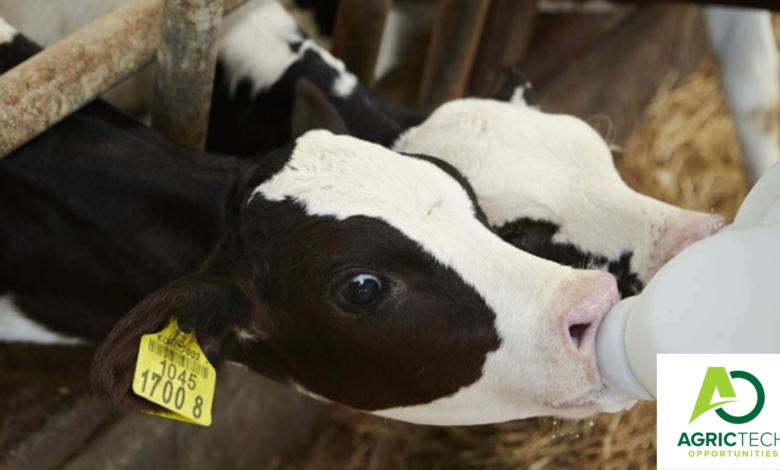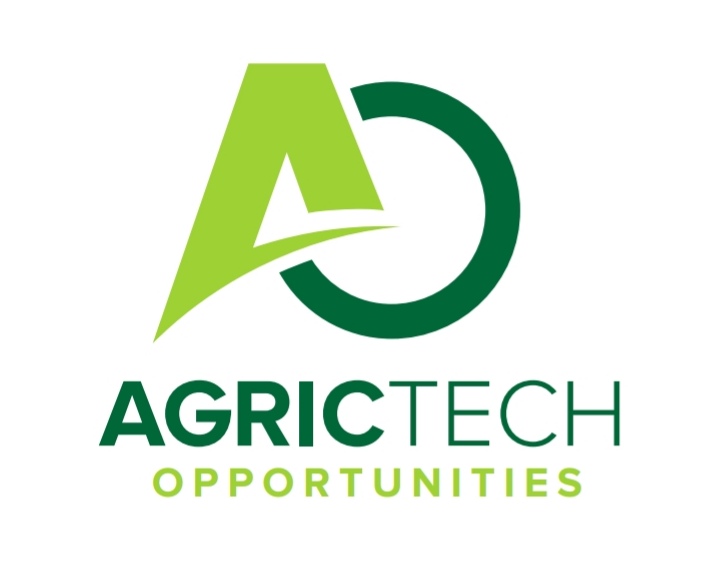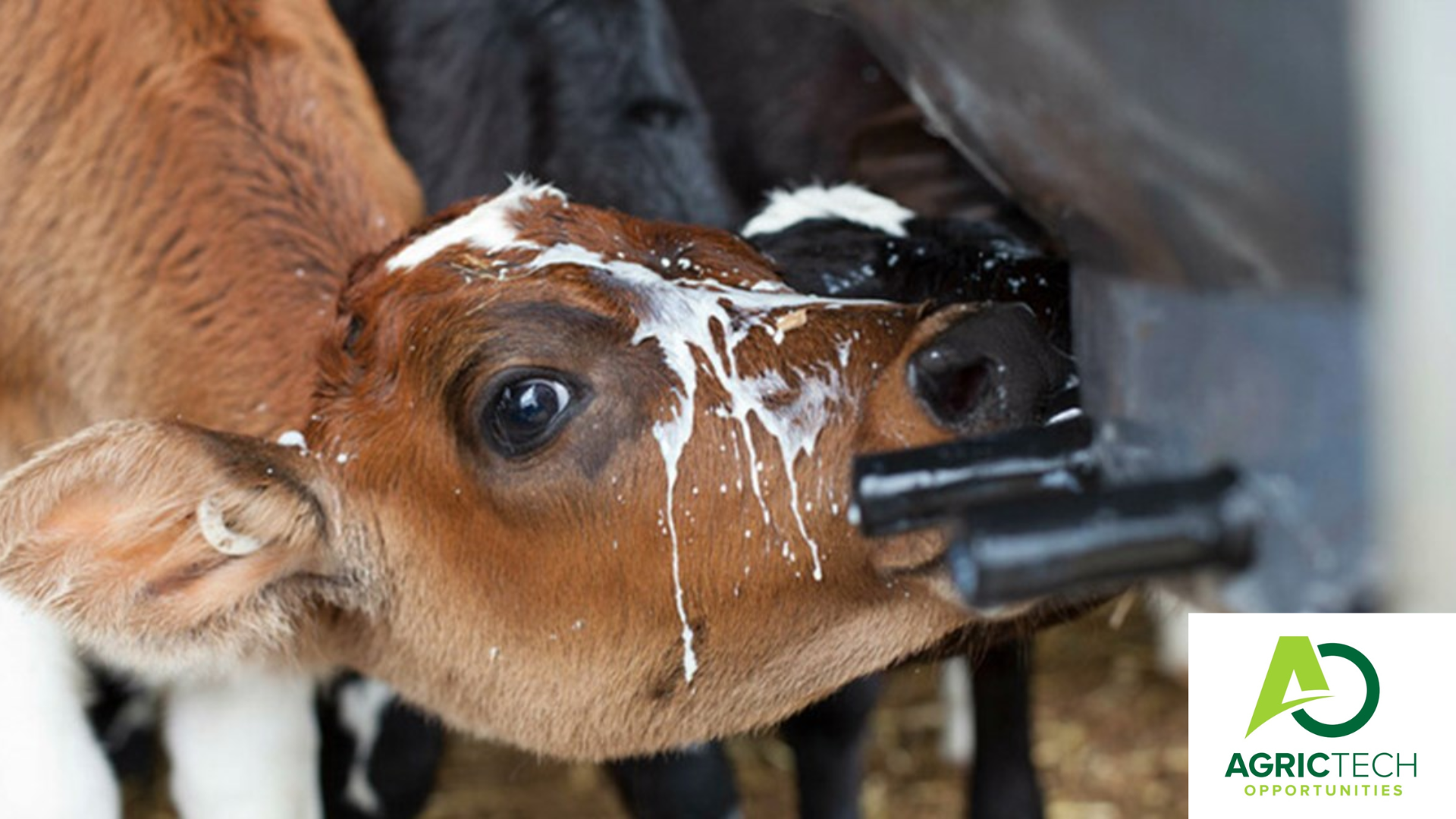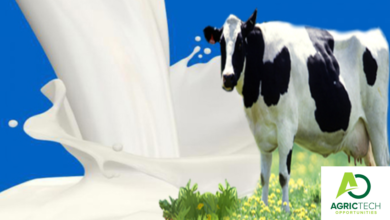Approved Guide To Dairy Calf Rearing 2023| Colostrum substitute|

Host
Global Dairy Production
Target Audience
Dairy Farmers
Introduction
Dairy calf rearing is a critical stage in the dairy industry as it sets the foundation for the future productivity and profitability of the herd. Proper calf rearing practices are essential to ensure the health, growth, and development of the calves. It is the process of raising young calves on a dairy farm to eventually become productive dairy cows.
ALSO READ: All You Need To Know About Dairy Milk Quality 2023 Addition
Why Concerned with calf rearing?
- Calf is artificially stressed
- Natural instinctive milk nourishent is disturbed
- Artificial nourishment is sometimes used
- Weaned on solid feeds to reduce cost
- The calf is artificially stressed!, no attachment to mother
Why good calf management practices?
- High death rate of calves up to 1 yr old (20% in most dairies…1% to 2% in some, 50% in others)
- Poor health & growth leads to death
- Born feeble of mothers under malnutrition
- Over 90% of calf deaths is due to scours due to dirty environments and wrong feeding
Loses when a calf dies– Potential replacement heifer and also to Investment in calf. To keep calf alive and fit to be able to produce in future. That when calves become heifers, they grow well to reach maximum fertility and lactation yields
Meaning of calf loss
Assuming an 80 dairy herd, Assuming calving rate of 80%, 64 calves are born, 50% calves are female, (i.e. 32). If 20% die, (i.e. 7), 25 are left. Replacement rate is 25% of 80 = 20, leaving 5 heifers for sale.
With better management– If motality is managed at 5%, then 5% of 32 die, (i.e. 2), 30 are left. Replacement rate is 25% of 80 = 20, leaving 10 heifers for sale…50% market value is recovered.
Housing and environment– Calves should be housed in clean, well-ventilated, and comfortable environments. Individual calf pens or hutches are commonly used to provide individual care and prevent the spread of diseases. Bedding should be clean and dry to maintain good hygiene.
Caring for newborn calf

5 Most Important Caring Procedure for newborn calf
1. Check for Breathing– Help stimulate breath, esp in cases of difficulty calving. Tickle inside nostrils with straw. Pressing and letting-up on calf’s rib cage. Note: incidences of calves breathing before birth are many, they often inhale mucus (esp in cases of difficulty calving). Clear throat: extend tongue, reach throat with 2 fingers. Hang calf upside-down in cases of difficulty calving.
ALSO READ: Understanding The Ostrich Industry In Zimbabwe and South Africa 2023 Guide 2023‘
2. Dry the calf– Give calf a good rub-down esp in cold weather, cow would lick its calf for bonding and reduction of excessive chilling. Give calf its first feed to increase ability to resist cold.
3. Dip the navel– Dip navel in 20% iodine solution immediately after birth and again, the day after.
4. Check for abnormalities– Umbilical hernia. Abnormal teats, Cleft/convex pallate, Jaws to be fit together squarely. Heifers born twin to a bull (Freemartins) are over 90% sterile, rear them for veal of beef.
5. Ensure timely feeding of colostrum– New born have no circulating antibodies in blood. Acquired immunity (plus some minerals and vitamins) from mother is key to initial calf health management. Additional properties of colostrum: energy rich, high in oil, Vit A (key for efficient development of lymphatic system and epithelial tissue), laxative effect. Calf’s digestive system begins functioning after 2 hrs (lower gut also become less permeable).
Crucial Colostrum– Problem – cow born in the night, need night shift workers during calving. Over 40% of calves left with their dams receive inadequate colostrum (THAT’S FIRST REASON WHY CALVES ARE SEPARATED FROM THEIR MOTHERS, to ensure adequate colostrum intake). Mortality decrease from 7.9% in calves receiving less colostrum to 1.3% receiving adequate; Scours from 42.2% to 5.4%, Pneumonia 5.2% to 2.4% (Brigstocke, 1981).
Standard Feeding of colostrum 2023
- 1 to 1½ hrs after birth, 1 litre colostrum at 37oC
- 1 litre by 3 hrs
- 1 litre by 8 hs
- 1 litre by 24 hs
- Total = 4 litres in 24 hrs
Good colostrum– Dry cow for at least 3 to 4 weeks (8 weeks is best for regeneration of udder and rumen + rest). Best colostrum is from 1st & 2nd milking. Can add a teaspoon of baking soda (sodium bicarbonate) to each litre to increase absorption.
ALSO READ: The Benefits of Doing an Internship: How It Can Help You Get Ahead in Your Career
The Best And Efficient Colostrum substitute
- 1 whipped egg
- 0.3 litres water
- 0.6 litres whole milk
- 0.25 ml castor oil
- Feed 4 times daily for 4 days, add an injection of vit A and tetracycline antibiotic
Why calves are separated from their mothers at birth
- To ensure enough consumption of colostrum
- To prevent udder damage from the nursing calf
- To protect the calf from diseases in manure that gets on the udder
- To avoid calves from being stepped on,
- Enables the farmer to obtain all the cow’s available milk and make it easy to milk and manage cows without calves
Liquid feeding period– Feed calves at fixed times from clean buckets (washed/sterilised by steaming or boiling). Avail water adlib in restricted milk feeding of when using high DM milk replacers (1/2 hr before, an hr after), milk/replacer to be at body temp. Train calves to feed from bucket. Introduce calf starter meal at early age to make calf ready at weaning.
Liquid phase – Calf starter meal– Low in fibre, high in protein, coarse and not dusty. Coarsely ground maize, soybean/CSM, minerals, vitamins, sweeteners + low level of antibiotic (upto 20% roughage). Chopped hay, ground maize cobs, cotton seed hulls can be used. Train calf to eat – rub on muzzle, add to milk bucket at end of milk. Supply a fresh meal every time. Offer fresh hay 2 to 3 times every day. Fresh water free of choice from 3 weeks on. Avoid overfeeding with whole milk to avoid scouring and formation of hard cheesey lump inside stomarch.
Weaning: Calves are typically weaned off milk or milk replacer around 8-12 weeks of age. The weaning process should be gradual, with the introduction of solid feed and a reduction in milk or milk replacer over time. This allows the calf’s digestive system to adapt to the new diet.
Liquid phase – management of scouring– Stop feeding milk for 1 or 2 meals – give commercial of home made electrolyte
- 1 teaspoon sodium bicarbonate soda
- 1 teaspoon salt
- 1 teaspoon potassium chloride
- 2 tablespoons glucose
- All in 1 litre of water
- Give 2 litres at each milking, twice. Then gradually reintroduce milk
ALSO READ: The Power of Networking And Connections To Succeed For Interns 2023/24
Health management: Regular health checks, vaccinations, and deworming are essential to prevent and control diseases. Calves should be monitored for signs of illness and treated promptly if necessary. Good hygiene practices, such as proper sanitation of feeding equipment and calf pens, are crucial to prevent the spread of pathogens.
Proper calf rearing practices are essential for the long-term success of a dairy farm. Well-nourished and healthy calves have a higher chance of becoming productive dairy cows that can contribute to the overall profitability of the farm.
ALSO CHECK: 4 Ways To Increase Live Weight In broilers And Egg Size In layers
For more updates On Agric Tech Opportunities kindly join the social groups below:




